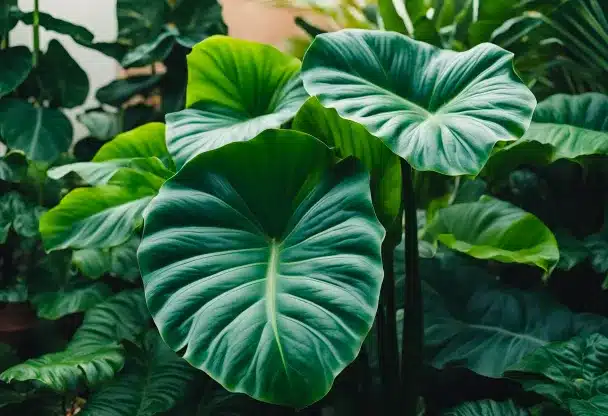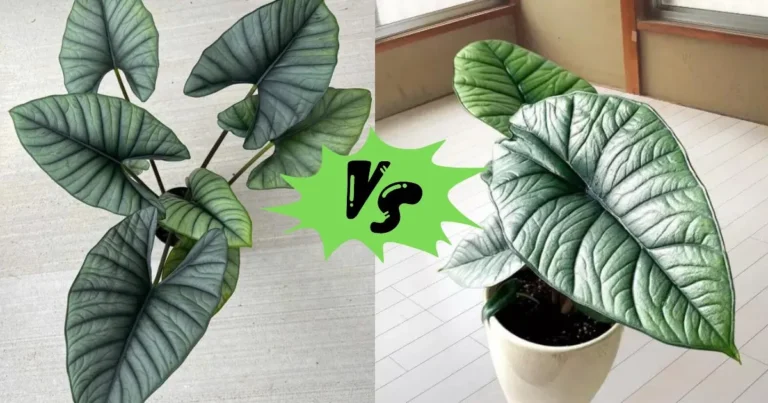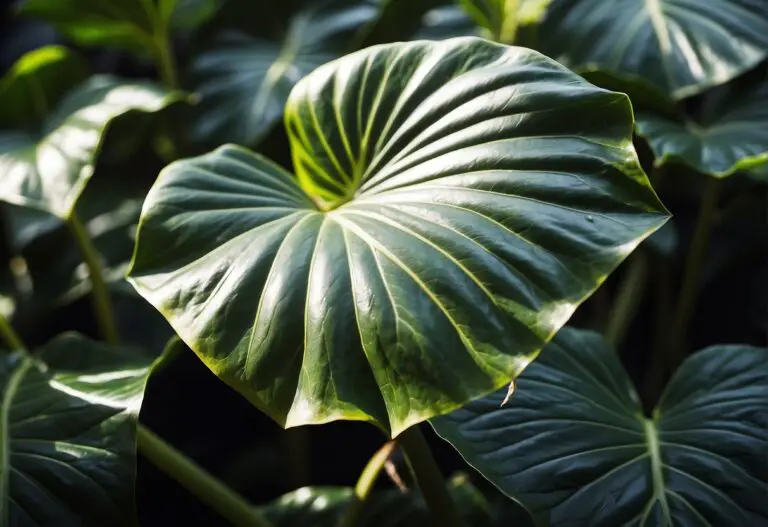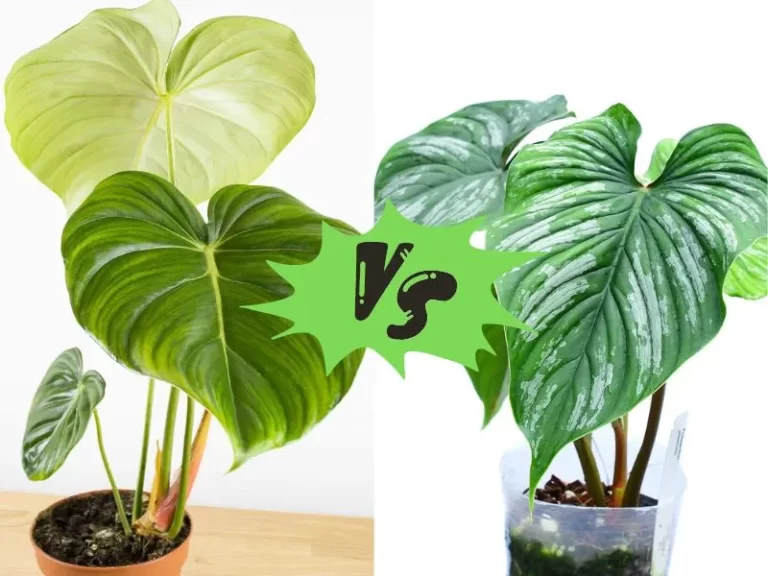Philodendron Pastazanum vs McDowell: Which One Should You Choose?
As a plant enthusiast seeking the ideal addition to your collection, you’ve come across two intriguing options: Philodendron Pastazanum and Philodendron McDowell. In this article, we’ll compare these indoor plants, highlighting their similarities and differences to assist you in making an informed choice.
Both Philodendron Pastazanum and Philodendron McDowell are popular indoor plant selections with unique characteristics. Philodendron Pastazanum boasts large, velvety green leaves, while Philodendron McDowell features heart-shaped leaves with reddish margins and pinkish veins on the underside.

While both plants are relatively easy to care for, they do have distinct growth requirements. By the end of this article, you’ll have the knowledge needed to select the perfect plant for your home.
Key Takeaways
- Philodendron Pastazanum and Philodendron McDowell are both popular indoor plants with similar features.
- Understanding the differences between these two plants can help you choose the right one for your home.
- Philodendron Pastazanum has large, green leaves with a velvety texture, while Philodendron McDowell has heart-shaped leaves with reddish margins and pinkish veins on the underside.
Philodendron Pastazanum Vs Mcdowell
Are you a plant enthusiast looking for a new addition to your collection? Philodendrons are a popular choice due to their ease of care and beautiful foliage.
But with so many varieties available, it can be hard to choose. In this article, we will compare two popular Philodendron species: Pastazanum and McDowell.
Leaf Size and Features
Both Pastazanum and McDowell have large leaves, but the leaves of McDowell are notably bigger. The leaves of Pastazanum are shiny and completely green, while McDowell’s leaves have reddish margins and pinkish veins on the underside.
Leaf Edges and Growing Points
The edges of Pastazanum’s leaves are smooth, while McDowell’s leaves have a slightly wavy edge. The growing points of both plants are different as well. Pastazanum has a single growing point, while McDowell has multiple growing points.
Leaf Backside and Petiole Markings
Pastazanum’s leaves have a smooth backside, while McDowell’s leaves have a rough backside. The petioles of Pastazanum are green, while McDowell’s petioles have reddish markings.
Stalk Features and Vein Colors
The stalks of both plants are green, but McDowell’s stalks have a slightly reddish tint. The veins of Pastazanum are green, while McDowell’s veins are reddish.
Spathe Colors
The spathe is the modified leaf that surrounds the flower of the plant. Pastazanum has a green spathe, while McDowell’s spathe is reddish.
Understanding Philodendron Pastazanum
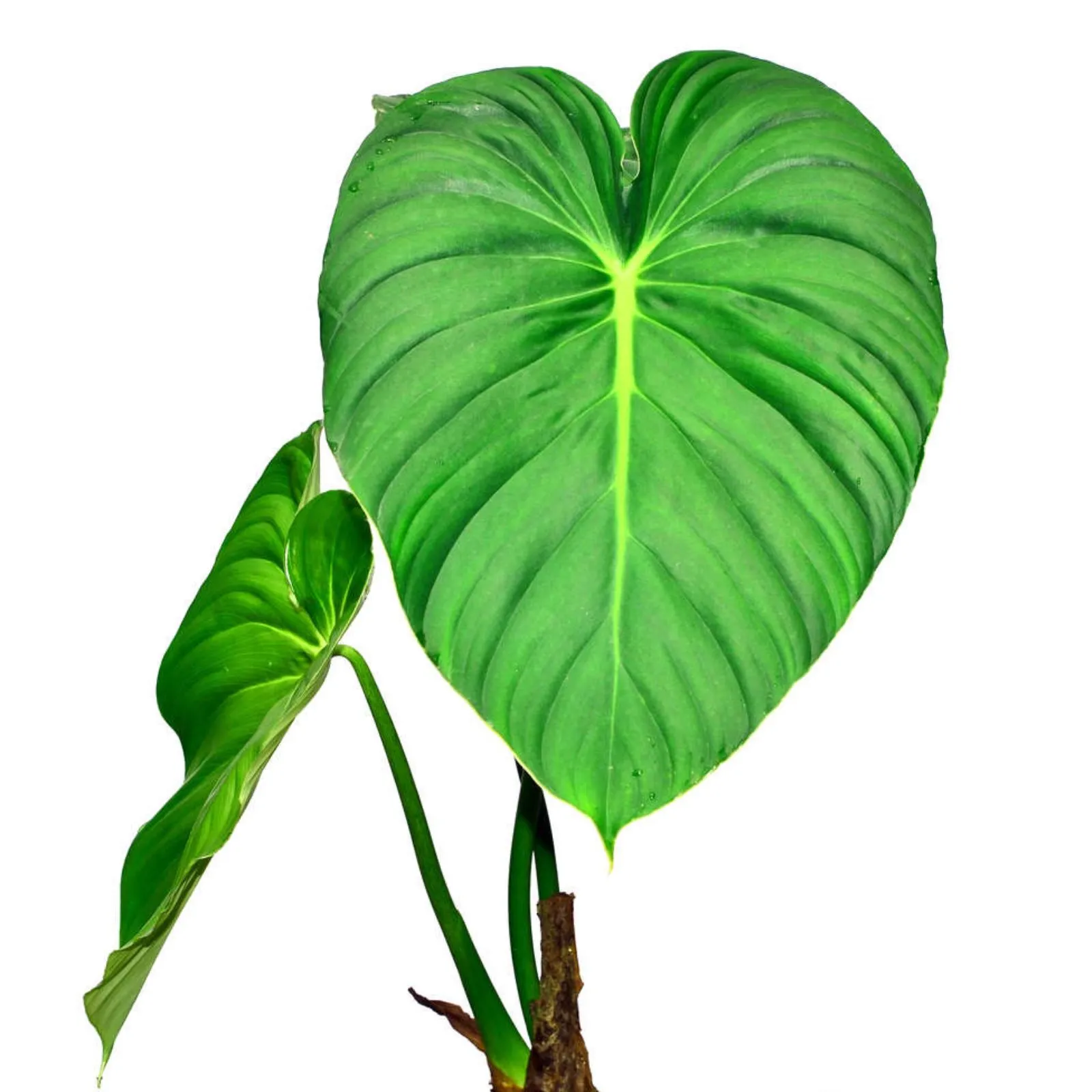
If you’re a plant lover, you must have heard about Philodendrons. They are native to South America and are popular for their beautiful foliage and easy care.
Two of the most sought-after Philodendron varieties are Pastazanum and McDowell. In this article, we’ll focus on Pastazanum and help you understand its history, growth, care, and common issues.
History and Origin
Philodendron Pastazanum is a rare plant that’s native to Ecuador, Columbia, and Peru. It’s a climbing plant that can grow up to 4 meters in height.
The plant has a unique appearance with its narrow and pointed leaves that are green and glossy. The plant’s name comes from the Pastaza River in Ecuador.
Growth and Care
Philodendron Pastazanum is a relatively easy plant to grow and care for. Here are some tips to ensure your plant thrives:
- Light: The plant prefers bright, indirect light. Direct sunlight can scorch its leaves.
- Watering: Water the plant when the top inch of soil is dry. Avoid overwatering as it can lead to root rot.
- Humidity: The plant loves high humidity. You can use a humidifier or place a tray of water near the plant to increase humidity.
- Fertilizer: Feed the plant with a balanced fertilizer once a month during the growing season.
- Propagation: You can propagate the plant through stem cuttings or air layering.
Common Issues
Like any other plant, Philodendron Pastazanum can face some issues. Here are some common problems and how to deal with them:
- Yellowing leaves: This can be a sign of overwatering or underwatering. Check the soil moisture level and adjust watering accordingly.
- Brown tips: Brown tips can be caused by low humidity or over-fertilization. Increase humidity and reduce fertilizer use.
- Pests: The plant can attract mealybugs, spider mites, and scale insects. Use insecticidal soap or neem oil to get rid of them.
Overall, Philodendron Pastazanum is a beautiful and low-maintenance plant that can add a touch of tropical beauty to any home. With proper care and attention, your plant can thrive and grow into a stunning specimen.
Getting to Know McDowell

If you’re a plant enthusiast, you might have heard of Philodendron McDowell. This plant is a hybrid of Philodendron Gloriosum Andre and Philodendron Pastazanum. It has become a popular houseplant due to its beautiful foliage and easy-going nature.
In this section, we’ll explore the history and origin, growth and care, and common issues of Philodendron McDowell.
History and Origin
Philodendron McDowell is a relatively new hybrid, first introduced in the late 1990s. It was created by a plant breeder named Dr. Birdsey. The plant was named after Dean McDowell, who was a friend of Dr. Birdsey. The hybrid is a cross between the Philodendron Gloriosum Andre and the Philodendron Pastazanum.
Growth and Care
Philodendron McDowell is a relatively easy plant to care for. It can grow up to 3 feet tall and 2 feet wide. Here are some tips on how to care for your Philodendron McDowell:
- Light: Philodendron McDowell prefers bright, indirect light. Direct sunlight can burn the leaves.
- Watering: Water your Philodendron McDowell when the top inch of soil is dry. Don’t overwater, as this can lead to root rot.
- Soil: Use well-draining soil that is rich in organic matter.
- Fertilizer: Fertilize your Philodendron McDowell once a month during the growing season with a balanced fertilizer.
- Temperature and Humidity: Philodendron McDowell prefers temperatures between 65-80°F and high humidity.
Common Issues
Like any plant, Philodendron McDowell can suffer from a few common issues. Here are some problems you might encounter:
- Yellowing leaves: This can be a sign of overwatering or underwatering. Make sure you are watering your plant correctly.
- Brown spots on leaves: This can be a sign of too much direct sunlight. Move your plant to a shadier spot.
- Pests: Philodendron McDowell can be susceptible to mealybugs, spider mites, and scale insects. Keep an eye out for any signs of infestation and treat accordingly.
Overall, Philodendron McDowell is a beautiful and easy-to-care-for plant. With the right conditions, it can thrive and bring a touch of green to your home.
Comparing Pastazanum and Mcdowell
If you’re a fan of philodendrons, you might be wondering about the differences between Pastazanum and Mcdowell. Both plants are members of the Araceae family, but they have some distinct differences in appearance, growth habits, and care requirements.
Appearance
One of the easiest ways to tell the difference between Pastazanum and Mcdowell is by looking at their leaves. The McDowell has reddish leaf margins, and the new leaves have pinkish veins on the underside, while Pastazanum’s leaves are completely green. Additionally, the leaves of Dean McDowell are notably bigger than those of Pastazanum.
Another way to distinguish between the two is by examining their cataphylls. The Pastazanum has green ones, while the McDowell has more reddish cataphylls. Lastly, they also have somewhat different petioles.
Growth Habits
When it comes to growth habits, the two plants have some differences as well. Philodendron Mcdowell is a diploid variety, meaning it has two sets of chromosomes. In comparison, Pastazanum is an allotetraploid variety, meaning it has four sets of chromosomes. This can affect how they grow and propagate.
Philodendron Pastazanum is known for its moderate growth, while Mcdowell is more adaptable and can grow larger. Both plants can be grown indoors or outdoors, but they may have different requirements depending on the environment.
Care Requirements
To keep your Pastazanum or Mcdowell healthy, it’s important to understand their care requirements. Both plants prefer well-draining soil and indirect sunlight. They also thrive in warm, humid environments.
When it comes to watering, it’s important not to overwater either plant. Allow the soil to dry out slightly between waterings to prevent root rot. Additionally, both plants benefit from regular fertilization during the growing season.
| Care Requirements | Pastazanum | Mcdowell |
|---|---|---|
| Light | Indirect sunlight | Indirect sunlight |
| Watering | Allow soil to dry out slightly between waterings | Allow soil to dry out slightly between waterings |
| Soil | Well-draining soil | Well-draining soil |
| Fertilization | Regular fertilization during growing season | Regular fertilization during growing season |
Frequently Asked Questions
What are the differences between Philodendron pastazanum and McDowell?
Philodendron pastazanum and McDowell are two popular philodendron plants. They have some similarities but also some differences. The main differences between the two plants are their leaf size, leaf features, leaf edges, growing points, leaf backside, petiole markings, stalk features, vein colors, and spathe colors.
Both plants have large leaves, but the leaves of Dean McDowell are notably bigger. McDowell has reddish leaf margins, and the new leaves have pinkish veins on the underside, while Pastazanum’s leaves are completely green. Pastazanum has green cataphylls, while the McDowell has more reddish cataphylls.
How do you care for Philodendron pastazanum and McDowell?
Philodendron pastazanum and McDowell are both easy to care for and make excellent additions to any home landscape. They prefer bright, indirect light, and well-draining soil. Water them when the top inch of soil is dry, and make sure to not overwater them.
Fertilize them every two weeks during the growing season. Prune them to maintain their shape and remove any dead or yellowing leaves.
What is the price range for Philodendron pastazanum and McDowell?
The price range for Philodendron pastazanum and McDowell varies depending on where you buy them and their size. They can range from $20 to $100 or more.
Is Philodendron McDowell a rare plant?
Philodendron McDowell is not a rare plant, but it is less common than Philodendron pastazanum.
What is the texture of Philodendron McDowell?
The texture of Philodendron McDowell’s leaves is smooth and glossy.
How does Philodendron pastazanum compare to Plowmanii?
Philodendron pastazanum and Plowmanii are both philodendron plants, but they have some differences. Plowmanii has more elongated leaves, while Pastazanum has rounder leaves. Plowmanii also has a more prominent midrib, while Pastazanum’s midrib is less visible.
Conclusion
In conclusion, both Philodendron Pastazanum and McDowell are great indoor plants to add greenery to your home. They are easy to care for and make excellent additions to any home landscape. However, there are a few physical differences between these two plants that should be considered when selecting either.
Philodendron Pastazanum has green leaves with green cataphylls, while McDowell has reddish leaf margins with pinkish veins on the underside. Additionally, McDowell has more reddish cataphylls. Both plants have large leaves, but the leaves of McDowell are notably bigger.
When it comes to growing points, McDowell has more of a vining habit, while Pastazanum has more of an upright habit. The petioles of McDowell have more markings, while Pastazanum’s are more plain. The spathe colors of McDowell are greenish-white, while Pastazanum’s are white.
Overall, both plants are great options for indoor greenery, but it ultimately comes down to personal preference and the specific qualities you are looking for in your plant. Consider the size of your space, the amount of light it receives, and the aesthetic you are going for when selecting between Philodendron Pastazanum and McDowell.

